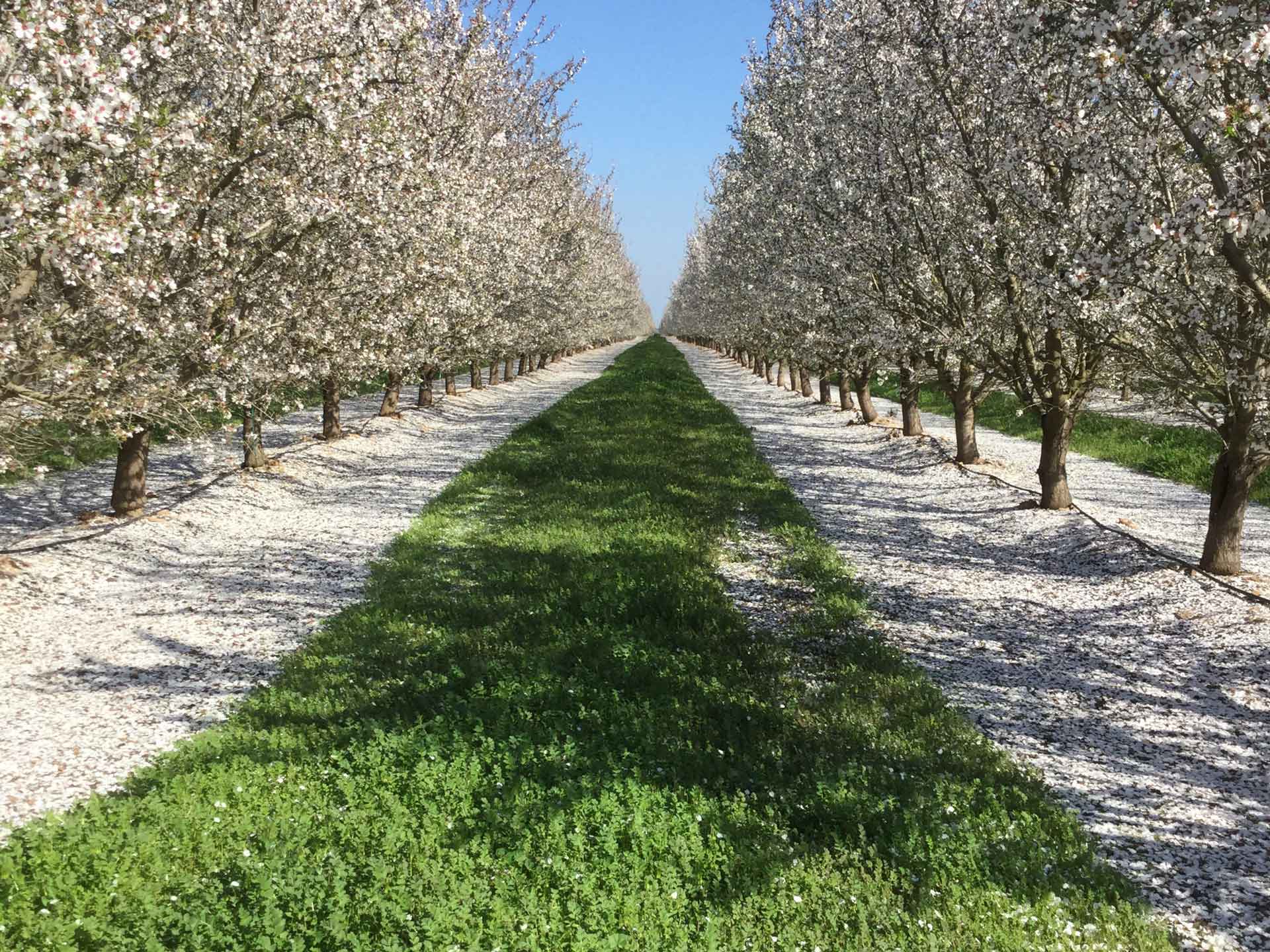To cover, or not to cover. That is the question. The research keeps piling up on the benefits of cover crops in our orchards. Water infiltration, reduced runoff, organic matter, water holding capacity increases, weed control and increased carbon stores are some of the major immediate impacts. Much of those benefits have to be weighed against the cost and effort of maintaining a good cover. What will it bring to your operation and is it worth it? The answer should be a resounding yes.
Healthy Soils Summit
I recently attended the Healthy Soils Summit sponsored by Acres USA at University of California (UC) Davis. The list of speakers facilitated by John Kemp was extensive and many had differing views on farming practices, sustainability and subsequent profitability. Gary Zimmer, Brendon Rockey and the California Central Valley’s own Vern Peterson discussed methods of farming and their means of keeping it going. Let’s be honest. If we couldn’t make money farming and keep doing it, our livelihood would have dwindled away to a minimalist existence already. What struck me as the most inspiring take away was how diversified they were in their approach to farming. They weren’t hung up on being 100 percent organic or 100 percent conventional, but on devising your system of farming that worked for you. What does your practice allow? What market fits your production and budget? What are the logistics of processing your crop in your area? One thing they all agreed on was the dynamic improvement their farms made with using proper cover crops for the type of soil environment they were trying to create.
My wife and I have experimented with cover crops for years now in our own pistachios. She has been adamant about using multiple species mixes to diversify the rooting structure and vegetation produced. Peas, beans, vetch, and barley were the staple for a few years. Last year we included tillage radishes in that mix. We were very impressed to say the least. Finding two foot long and six inch wide soil chisels growing in our field was eye opening. But what else happens with a cover crop in the field?
Cover Crops
Nitrogen (N) makes up 78 percent of the earth’s atmosphere. Oxygen is roughly 21 percent. Argon gets almost 1 percent of the make-up and CO2 comes in at almost a whopping 0.04 percent! Do you mean to tell me that trees can’t assimilate any of that Nitrogen and only take in the 0.04 percent CO2 from the air to live? The truth is, they aren’t as good at it as other plants. That’s where the cover crops come in. When you pull up a mature legume and see the red nodules on the roots full of N, that’s cheap nitrogen. Disked in year after year, that’s more N as soil biology breaks down the detritus not to mention massive amounts of carbon. We’ve talked quite a bit about soil biology and the interaction with roots and their exudates. Higher carbon content with healthier soil biology is crucial to maximizing production. Healthy biology produces stronger Induced Systemic Resistance in our plants. Higher carbon in the soil used to scare growers into thinking they would lose all available nitrogen for the growing plants. While it may have an effect on row crops, this hasn’t come to fruition in orchards. And as carbohydrates burn and soil biology transpires, CO2 is released again. Where are the stomata on plants? Under the leaves! God wasn’t messing around with this design. I know that’s over simplified, but you get the point. The system will work with the proper balance. So, how do we get there?
Adding compost to your soil will run you approximately $25-40 per ton. A cover crop will run you approximately $50-$60 per acre generating tons of green waste. Both will be beneficial in adding biology and especially organic matter. The addition of four to six tons of green waste (on a dry mass analysis) is not unusual when a cover crop is mowed. With two to three tons of compost, that’s a lot of carbon, biology and depending on your mix, a lot of future plant ready nitrogen that won’t leach. Not to mention, the weed suppression that comes from the mat of forage that when it’s mowed, covers the orchard floor. Now take into account the fact that sunlight reflects off the chaff and doesn’t allow the soil to get as hot in the summer = another benefit. The roots that remained add soil structure, food for the biology, and improved infiltration. Add all that organic matter year after year into the soil structure and you’re also holding more and more water in your root zone. When it breaks down into humics, that organic matter will hold 20X’s its weight in water. 20 times! In California, with Sustainable Groundwater Management Act (SGMA) going into effect, 20 times more soil storage could make or break a farm with only well water in a drought condition.
Drawbacks
A couple drawbacks we have noticed is of course, timing. Mother nature doesn’t water your fall cover crop on a regular schedule. Some years, improper timing will alter the strength of the diversity in the mix as well. Timing your mowing schedule to maximize cover maturity can be tricky if growing conditions aren’t ideal. Starting now and replanting year after year, will however definitely, improve your soil. The effects of continual soil improvement practices will pay much bigger dividends in the future as we allow mother nature to do her thing. Using a good cover mix year after year in your orchard will go a long way to cover your biggest asset, your soil.
















